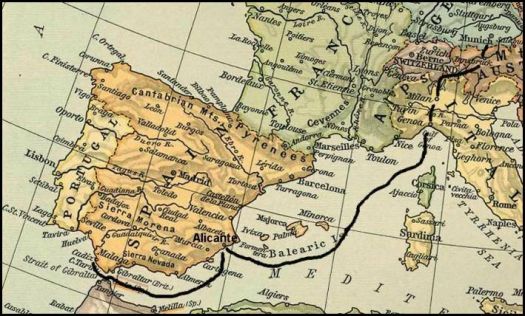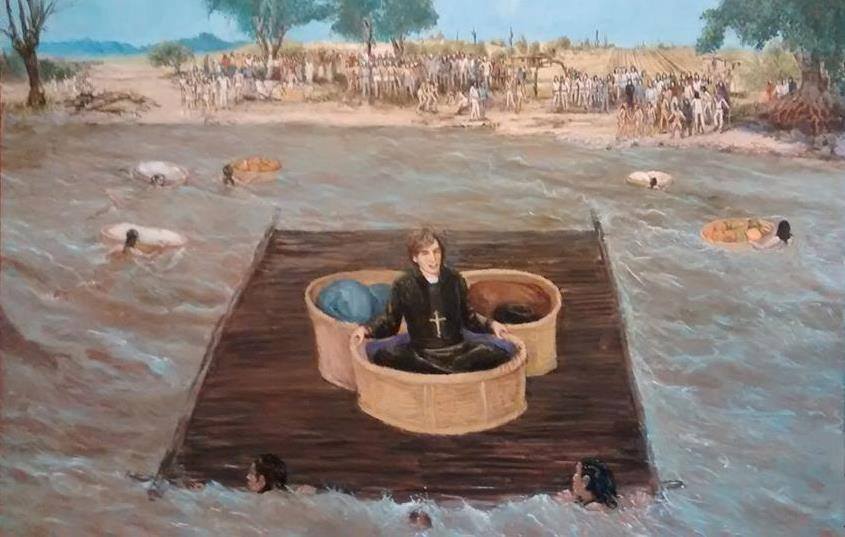Explorer Kino Explorer
Explorer Section Page
Explorer Section Page Links
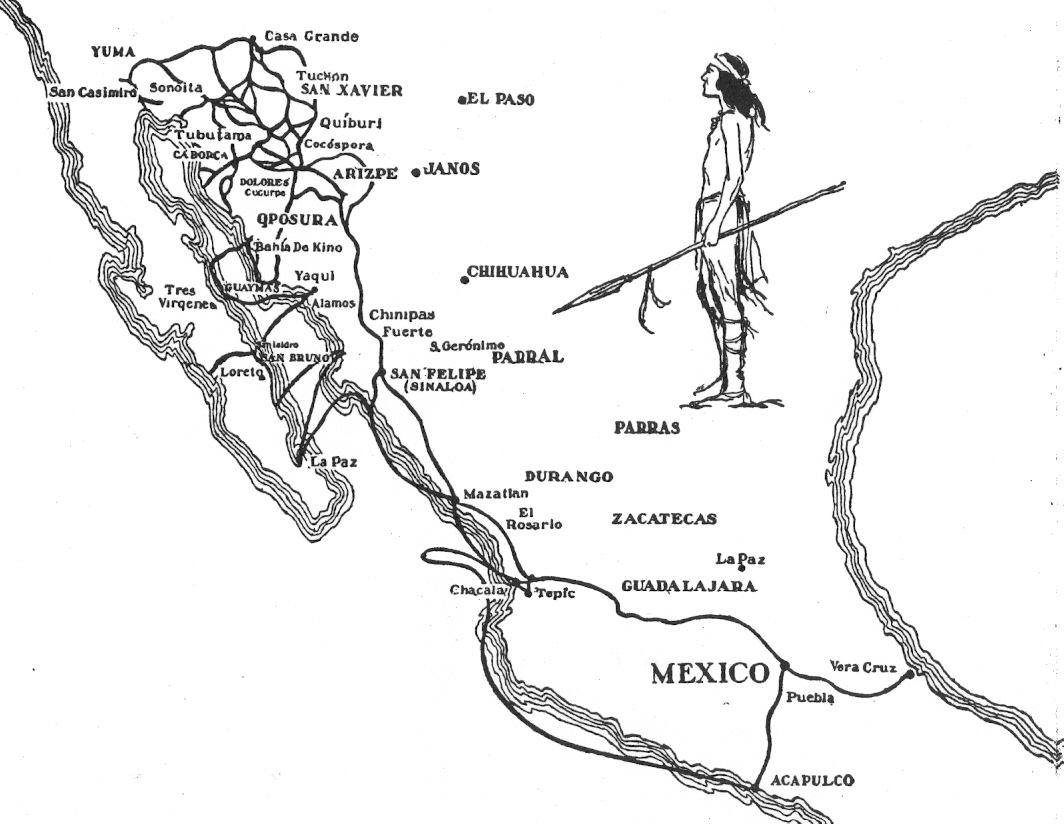
Kino Travels in New World
Spanish Royal Ordinances Governing Discoverers and Their Explorations
Law of Indies 1573
Jorge Olvera
|170| Philip II, for his part,wished to avoid disorderliness when he published his Ordenanzas Reales (Royal Ordinances) in his Leyes de Indias (Laws of the Indies) on July 13, 1573. These ordinances prescribed a series of steps to be taken in creating settlements in the recently conquered lands. ...
It is possible to discern how closely Kino followed the Ordenanzas Reales as soon as he was authorized by the Spanish crown, through viceregal authority and his religious superiors, to found new missions in the Pimeria Alta. Kino, especially as the discoverer and settler of what to Spain were new and unknown lands, was expected strictly to adhere to Las Leyes de Indias.
Ordinance Number 1 stated: “No person, without our authorization, can make a new discovery, nor entry, nor establish a new settlement, hamlet or camp or rancheria in that which is already discovered, under penalty of death and confiscation of property; but in that which is already discovered, the governors can authorize whatever new settlements that are convenient, sending us a descriptive account of it as soon as possible.”
|171| Under Spanish law, Kino became 1) a discoverer, 2) an adelantado, or the advanced governor of a province to be discovered, and 3) a missionary for the spreading of the Gospel.
Ordinance Number 14 said, "The discoverers with the officials will name all the land discovered, [including] each province and the mountains and most important rivers."
Accordingly, Kino named the region the Pimeria Alta and proceeded to name its rivers, mountains, and Indian settlements. In naming the latter, he preserved the Indians' names for their own communities, joining them with a Christian name and thereby bestowing Christian patron on the village. He did this when he added the Christian name Santa Maria Magdalena to the Indian settlement of Buquivaba (Santa Maria Magdalena de Buquivaba). From his diary, we know he did the same for dozens of other places, including Nuestra Señora de los Dolores de Cosari (or de Bamotze), Nuestra Señora del Pilar y Santiago de Cocospera, San Xavier del Bac, and San Pedro y San Pablo del Tubutama.
Like a new Adam who was given the privilege by God of naming everything in the newly created paradise, Kino also labelled the rivers, mountains, and even such sites in the desert as water holes or sandy areas.
Ordinance Number 26 shows the importance placed by the Spanish crown on members of religious orders in the discovery and settlement of the New World: "Before entrusting the discovery to others, put it under the care of those friars who would wish to do it and give them all facilities and security at our cost."
Once the missionaries or civilians were in charge of the discoveries and settlements, several ordinances came into play. Among the more important were the following:
Ordinance Number 29: "The discoveries should not be called conquests, for they have to be made in peace and charity."
Ordinance Number 30: "The discoverers should keep these ordinances, especially those that are favorable to the Indians."
Jorge Olvera
Finding Father Kino:
The Discovery of the Remains of Father Eusebio Francisco Kino, S.J. 1965-1966
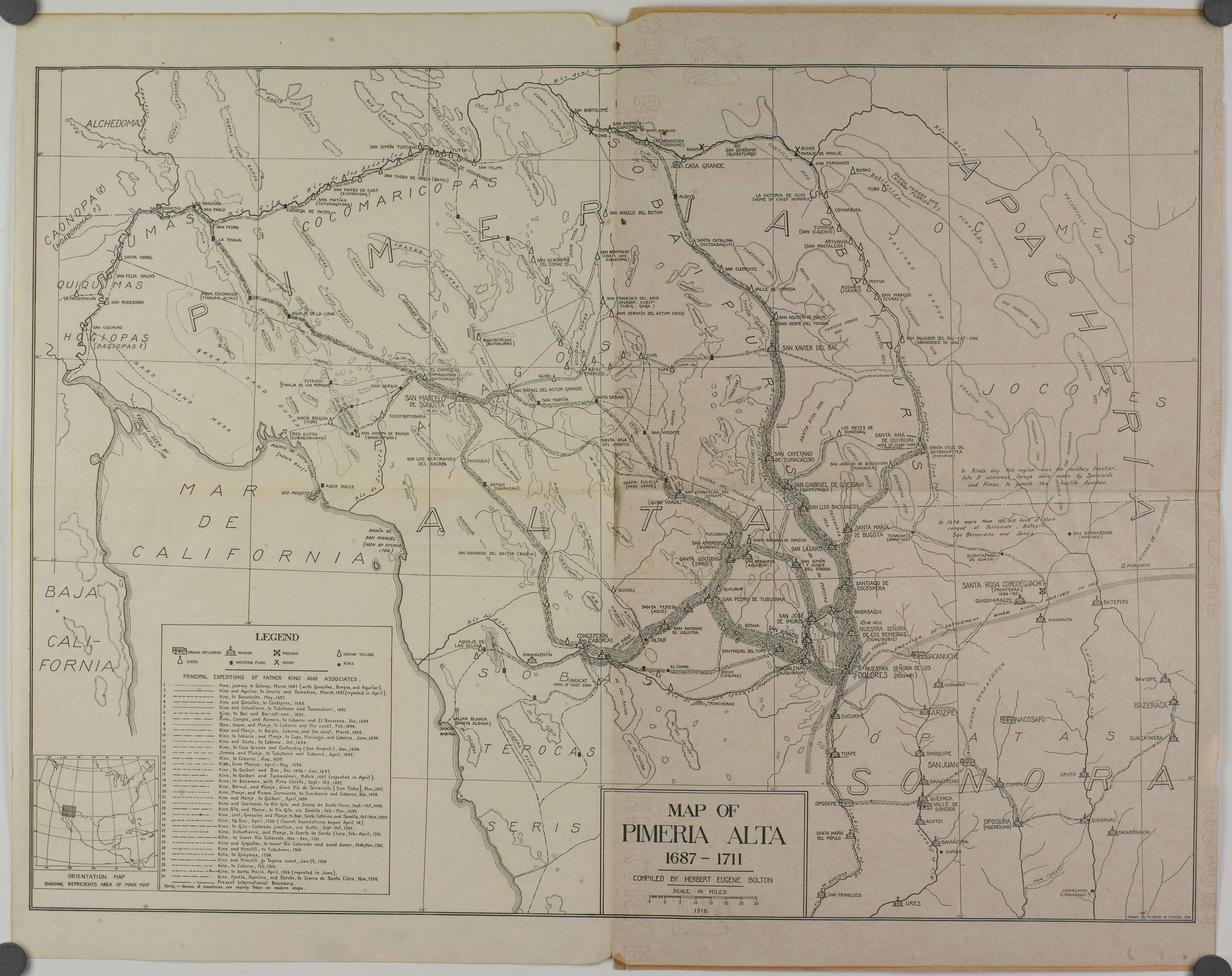
Bolton's Kino Route Map from "Kino's Historical Memoir"
Links To Kino Route Maps In High Resolution
"The Rim of Christendom: a Biography of Eusebio Francisco Kino, Pacific Coast Pioneer"
Collection From Book's Back Pocket
The University of Arizona Campus Repository
Pima Land, 1687-1711
Compiled by Herbert E. Bolton, 1936 (13 MB)
Click to download
http://arizona.openrepository.com/arizona/handle/10150/623457
Kino's Teatro de los Trabajos Apostolicos
Eusebio Francisco Kino
Drawn in 1695-1696.from the original manuscript (9 MB)
Click to download
http://arizona.openrepository.com/arizona/handle/10150/623456
Bolton Map Collection Page
Links On One Page To Access All Three Maps
The University of Arizona Campus Repository
Click to access repository page
http://arizona.openrepository.com/arizona/handle/10150/623454
Pimeria Alta 1687-1711
Map compiled by Herbert E. Bolton, 1919 (1.5 MB)
An earlier version of the the 1936 "Pima Land 1687-1711" Map that accompanied Bolton's "Kino's Historical Memoirs"
Click to download
http://ccdl.libraries.claremont.edu/cdm/ref/collection/p15831coll14/id/131
Page Links to Detail Explorations
For all Pimeria Alta Expeditions
Click Explore Sonora & Arizona page
For more detail on the Pimeria Alta to Colorado River (Expeditions 23 through 29)
Click Explore Colorado River and Delta page
For more detail on Kino's 3 trips in the Pinacate Volcanic Fields and Gran Desierto
Click Pinacate and Gran Desierto page
Francisco Eusebio Kino - El Padre de Sonora"
Manuel de Jesús Sortillón Valenzuela
Excellent Route Maps and Biographical Summary in Spanish
In Spanish
"Francisco Eusebio Kino - El Padre de Sonora"
Manuel de Jesús Sortillón Valenzuela
Website, 2004
Excellent route maps Text based on Herbert E. Bolton's "Rim of Christendom" and Kino's writings with location photographs and beautiful art illustrations.
All 16 chapter links work. The Prólogo and Epílogo links do not work.
Click
Sortillion Kino Website page
Chapters:
1. El Joven Eusebio; 2. Un Viaje Demasiado Largo; 3. California, una Ilusión Inesperada; 4. Una Misión Imposible; 5. El Adiós a San Bruno; 6. Una Bahía para Kino; 7. Sonora Querida; 8. Buscando Almas; en la Pimería; 9. La Pimería en Revolución; 10. Un Perdón Enmedio de un Castigo; 11. Kino Cabalga de Nuevo; 12. Mas Viajes y Kino Descubre “El Pinacate”; 13. Juan y Eusebio Juntos de Nuevo; 14. La Aventura de las Conchas Azules; 15. Kino Pasa por Pitic; 16. Adiós Eusebio; Prólogo (not linked); Epílogo (not linked)
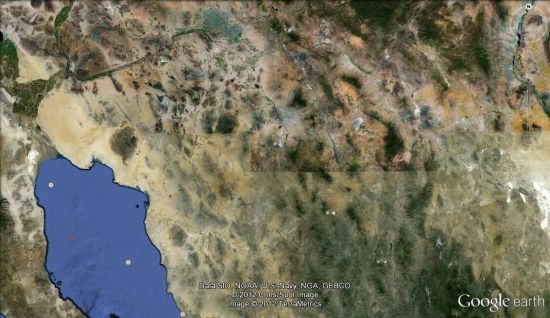

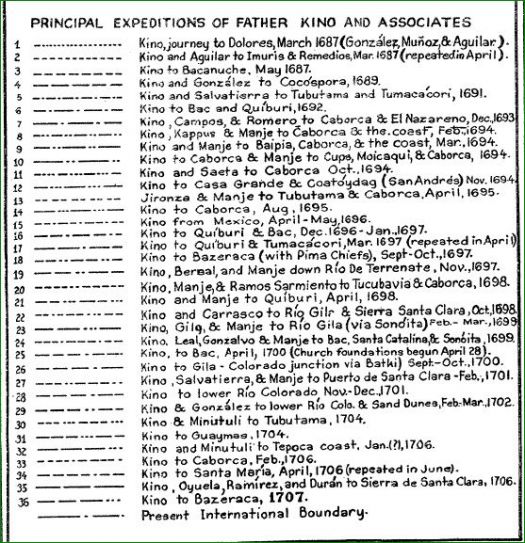
Kino Travels in Baja and Gulf of California
1681 - 1685
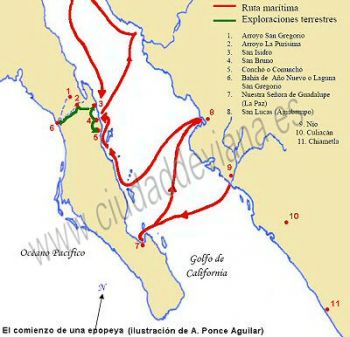
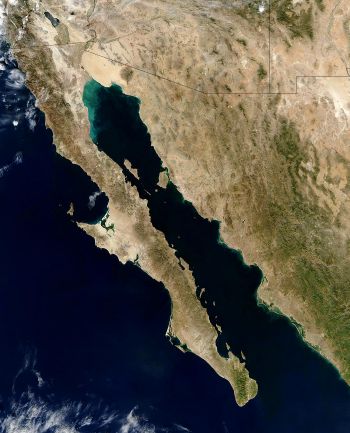
Kino Voyage To Spain 1678
Munich to Cadiz
